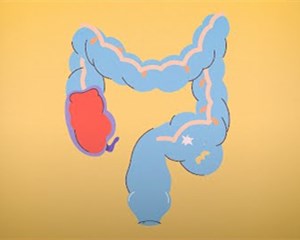How often do you poop? You might have heard you should have a bowel movement once a day.
你多久排一次便?你可能听说过这个说法:人每天应该排便一次。
But the truth is that if you poop anywhere from three times a day to three times a week, you're completely and totally normal.
但事实是,如果你每天排便三次,或者每周排便三次,你都是非常正常的。
Hey there, it's Dr.Jen Gunter. As an ob-gyn and pain-medicine doctor, I end up talking to my patients about poop more than you might think.
大家好,我是珍·甘特医生。作为一名妇产科医生和止痛药医生,我和病人谈论便便的次数比你想象的还要多。
Overall, I hear a lot of anxiety about it.
总的来说,我听到了很多关于便便的焦虑。
Some people worry about not having a bowel movement once a day, even though its a phony metric. Other people struggle with constipation.
即便“一天一次排便”并不是什么参考标准,但还是有人担心自己一天都不排一次便会不会有什么问题,还有一些人在和便秘作斗争。
Often, they don't get the treatment that they need, and they can even turn to dangerous solutions, such as colon cleanses.
通常他们不会得到自己所需的治疗,他们甚至会采取危险的解决办法,比如结肠清理。
But for all the poop talk, there's one word I don't hear enough -- fiber.
但是,在所有关于“排便”的讨论中,有一个词我听不够,那就是“纤维”。
Let me take you through the journey from food to poop.
让我来带你经历一趟从食物到便便的旅程。
Digestion actually starts in the mouth. Chewing breaks the food down into smaller particles.
消化其实是从口腔开始的,咀嚼会把食物嚼成小颗粒。
As you eat, your food mixes with saliva, which moistens the food, and has enzymes that start to break down those starches and fats.
在你吃东西的时候,食物会和唾液混合在一起,唾液令食物湿润后,里面的酶开始分解淀粉和脂肪。
Contractions is your esophagus push the food to your stomach, where acid and gastric juices and enzymes further break the food down.
之后食道收缩将食物推向胃部,胃酸、胃液和酶会对食物进行进一步分解。
The food then travels to the small intestine, where fats, proteins, carbohydrates and micronutrients are further broken down,
然后食物进入小肠,在胰腺、胆囊、肝脏和微生物群的帮助下,
with help from the pancreas, gallbladder, liver and the microbiome, so they can be absorbed across the small intestine and sent to the liver for processing.
脂肪、蛋白质、碳水化合物和微量营养素被进一步分解,从而通过小肠被吸收,送到肝脏进行处理。
What's left moves to the large intestine or the colon, which has three main jobs: absorbing water and electrolytes, producing and absorbing vitamins and forming and squeezing the material, now called stool, towards the rectum.
剩下的部分会转移到大肠或结肠,结肠有三大主要功能:吸收水和电解质、产生和吸收维生素、形成并挤压这些物质(此时已经变成了“便便”)向直肠移动。
When the rectum is full, it sends a signal to the brain, and the brain takes into account whether it's a socially acceptable time to poop, and if it is, it sends a signal to the anal sphincter muscles to relax.
当直肠被充满时它会向大脑发送一个信号,大脑会考虑现在是不是社会可接受的排便时间,如果是,它会向肛门括约肌发出可放松信号。
And boom, you know what happens next.
然后一声响,接下来发生什么你是知道的。
This process involves more than 10 organs and typically takes anywhere from 24 to 120 hours in healthy people.
这一过程涉及10多个器官,在健康人身上通常需要花费24到120个小时。
So it's helpful to think of poop as exactly what it is -- all the stuff that doesn't get digested in this process.
所以把便便想成是 “在这一过程中没有被消化的东西” 是非常滴有帮助的。

It is water, bacteria, dead cells and mucus, all glommed together with fiber.
便便其实就是水、细菌、死细胞和黏液,它们都和纤维粘在一起。
Fiber is amazing. It affects the digestive tract from top to bottom. It is very simply a carbohydrate the body can't absorb.
纤维厉害了,它从上至下整个影响着消化道,它只是一种身体无法吸收的碳水化合物。
While other carbs are broken down into sugars, fiber passes by sort of moseying along, doing all kinds of cool things.
当其他碳水化合物被分解成糖时,纤维就像漫步一样,做着各种很酷的事情。
High-fiber foods physically take longer to eat, so they help us pace our meals.
高纤维食物需要更长时间消化,所以它们可以帮助我们调整饮食节奏。
The bulk also slows down digestion, especially in the stomach, and makes you feel full longer.
大量的脂肪还会减缓消化,尤其是在胃里的脂肪,它会让你的饱腹感更持久。
Fiber also draws water into the stool, keeping it soft.
纤维还能吸水,保持大便柔软。
Scratchy, hard stool is, to put it mildly, unpleasant. It also increases bacterial mass.
大便发痒、硬,说得文明点儿,是不愉悦的,它还会增加细菌的数量。
The water and bacteria together increase the bulk of the stool, which helps it move along.
水和细菌增加了粪便的体积,这有助于它的移动。
Fiber also slows absorption of sugars into the bloodstream and reduces absorption of fats and cholesterols.
纤维还能减缓血液对糖的吸收,减少脂肪和胆固醇的吸收。
And as fiber collects in your colon, it feeds all your good gut bacteria, helping you maintain a healthy microbiome.
随着纤维在结肠中聚集,它为所有有益的肠道细菌提供营养,帮助你保持健康的微生物群。
Fiber is associated with the reduced risk of diabetes, heart disease, several gastrointestinal conditions and even certain cancers.
纤维可以降低患糖尿病、心脏病、一些胃肠道疾病甚至某些癌症的风险。
And yet, most of us aren't getting enough of it.
然而,我们大多数人并没有得到足够的纤维。
For example, in the US, the vast majority of adults aren't eating the recommended 28 grams of fiber per day.
例如,在美国,绝大多数成年人每天摄入的纤维量低于所建议的28克。
In fact, the average American just gets 15 grams of fiber a day.
事实上,美国人平均每天只摄取15克纤维。
So how exactly do you get more fiber? The generic answer is to eat more whole grains, fruits, vegetables and legumes.
那么到底怎样才能获得更多的纤维呢?答案通常是多吃粗粮、水果、蔬菜和豆类。
But I want you to consider some more specific fiber-rich foods that I personally love: pears, raspberries and blackberries, avocados and artichokes, high-fiber cereals, whole grains -- my favorite is farro -- lentils, kidney beans and chickpeas.
不过我想让大家考虑一下我个人偏爱的一些更特定的富含纤维的食物:梨、树莓和黑莓、鳄梨和朝鲜蓟、高纤维谷物、全谷物——我最喜欢的是法诺(属于小麦家族的一种古老的谷物)——小扁豆、芸豆和鹰嘴豆。
Almonds, pistachios and sunflower seeds are other options.
杏仁、开心果和葵花籽也是不错的选择。
When in doubt, reach for those. And happy pooping.
当你啥时候对自己的便便感到焦虑时可以考虑吃吃这些食物。最后,祝大家排便愉快!












